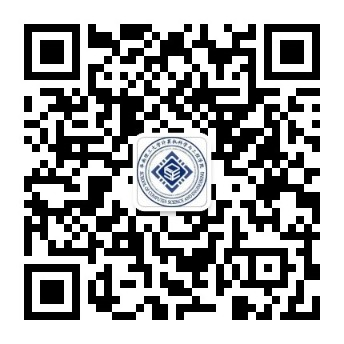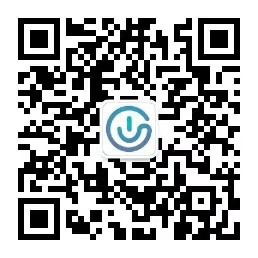《信息内容安全》实验教学大纲
课程代码 | 045101951 |
课程名称 | 信息内容安全 |
英文名称 | Information Content Security |
课程类别 | 专业领域课 |
课程性质 | 选修(专业必修) |
学时 | 总学时:48 实验学时:16 实习学时:0 其他学时:0 |
学分 | 2.5 |
开课学期 | 第6学期 |
开课单位 | 计算机科学与工程学院 |
适用专业 | 信息安全及计算机相关专业 |
授课语言 | 中文 |
先修课程 | 《密码学与安全协议》、《高级语言程序设计C++》、《数字图像处理》 |
毕业要求(专业培养能力) | (本学院开设的专业课填写;根据专业所列的毕业要求来填写) №3.设计/开发解决方案:能够设计针对信息安全复杂工程问题的解决方案,设计满足特定需求的信息安全解决方案,并能够在设计环节中体现创新意识,考虑社会、健康、安全、法律、文化以及环境等因素。 №5.使用现代工具:能够针对信息安全复杂工程问题,开发、选择与使用恰当的技术、资源、现代工具和信息技术工具,包括对信息安全复杂工程问题的预测与模拟,并能够理解其局限性。 №6.工程与社会:能够基于信息安全工程相关背景知识进行合理分析,评价信息安全专业工程实践和复杂工程问题解决方案对社会、健康、安全、法律以及文化的影响,并理解应承担的责任。 №8.职业规范:具有人文社会科学素养、社会责任感,能够在工程实践中理解并遵守工程职业道德和规范,履行责任。 |
课程培养学生的能力(教学目标) | 完成课程后,学生将具备以下能力: (1)掌握设计/开发与信息内容安全相关的解决方案; (2)能够使用与数字内容安全相关的技术工具; (3)能够基于所学知识合理分析数字内容的安全工程问题,评价内容安全解决方案对社会、健康、安全、法律以及文化的影响,并理解应承担的责任; (4)具备科学素养和社会责任感,能够在工程实践中理解并遵守职业道德和规范。 |
课程简介 | 信息内容安全是数字内容在技术、政治、法律、道德等层次上的安全要求,即信息内容在技术上是可靠的,在政治上是健康的,在法律上是符合国家法律法规的,在道德上是符合优良传统的。通过本课程的学习,使学生掌握信息内容安全中的基本概念、基本理论和基本技术。主要教学内容包括:信息内容安全的概念,信息加密技术,消息认证与数字签名,信息隐藏与数字水印,数字取证技术,文本内容安全,数字图像内容安全,数字音频内容安全,数字视频内容安全,数据库安全等。 |
主要仪器设备与软件 | 主要仪器设备:可上网的计算机 主要软件:Windows操作系统,MicrosoftVisualC++,Matlab |
实验报告 | 按照学校实验报告格式完成各个实验报告。 |
考核方式 | 本课程考核方式为课堂出勤、实验报告和实验课表现,成绩比例为: 课堂出勤:20% 实验课表现:20% 实验报告:60% |
教材、实验指导书及教学参考书目 | 教 材:
参考书:
3、马民虎,互联网信息内容安全管理教程.中国人民公安大学出版社,2007 |
制定人及发布时间 | 吴昊天 2019/04/14 |
《信息内容安全》实验教学内容与学时分配
实验项目编号 | 实验项目名称 | 实验学时 | 实验内容提要 | 实验类型 | 实验要求 | 每组人数 | 主要仪器设备与软件 |
1 | 用于图像内容验证的脆弱水印 | 4 |
在命令行下验证被篡改的图像,并观察验证结果图像。 | 综合性 | 必做 | 1 | 主要仪器设备:可以上网的计算机 主要软件:Windows系列操作系统,Microsoft VisualC++ 2008,MATLAB |
2 | JPEG图像隐写与隐写分析 | 4 |
采用已有的隐写分析程序,对库中的JPEG图像图像进行隐写分析。 | 综合性 | 必做 | 1 | 主要仪器设备:可以上网的计算机 主要软件:Windows系列操作系统,MATLAB |
3 | 图像可逆数据隐藏 | 4 |
从图像中提取隐藏的数据,并恢复原始图像。 | 综合性 | 必做 | 1 | 主要仪器设备:可以上网的计算机 主要软件:Windows系列操作系统,Microsoft VisualC++ 2008 |
4 | 基于文本的特征串匹配 | 4 |
返回查询结果。 | 综合性 | 必做 | 1 | 主要仪器设备:可以上网的计算机 主要软件:Windows系列操作系统,Microsoft VisualC++ 2008 |
“InformationContent Security” Syllabus
CourseCode | 045101951 |
CourseTitle | InformationContent Security |
CourseCategory | Specialty-relatedCourse |
CourseNature | ElectiveCourse |
ClassHours | TotalHours: 48 Experimental Hours: 16 Internship hours: 0 Other hours:0 |
Credits | 2.5 |
Semester | the 6thsemester |
Institute | ComputerScience and Engineering |
ProgramOriented | Informationsecurity and the related computer major |
TeachingLanguage | Chinese |
Prerequisites | Cryptographyand Security Protocol |
StudentOutcomes (Special Training Ability) | 3.Designing and Developing Solutions: with the ability to design thesolutions to complex and specific engineering problems ininformation security, to have an innovative sense in the designphase by considering the factors of society, health, safety, lawand culture. 5.Applying the Modern Tools: with the ability to develop, select anduse the appropriate techniques, resources, and modern tools and ITtools, including prediction and simulation, to solve the complexengineering activities in information security and understand thelimitations. 6.Engineering and Society: with the ability to reasonably analyzeand evaluate the impacts of professional engineering practice andsolutions to the complex engineering problems to society, health,safety, law and culture issues by using the background knowledgeof information security engineering, to understand the consequentresponsibility. 8.Professional Regulations: to understand the humanity science andhave the sense of social responsibility, be able to responsiblyunderstand and abide the professional ethics and regulations inengineering practice. |
TeachingObjectives | Students will achieve thefollowing abilities after completing the course study: 1. Capable of designing anddeveloping the solutions related to information content security; 2. Capable of using thetechnical tools related to information content security; 3. With the ability toreasonably analyze the digital content security engineeringproblems, to evaluate the impacts of professional practices andsolutions to society, health, safety, law and culture, and tounderstand the consequent responsibility. 4. To have scientific qualityand sense of social responsibility and be able to responsiblyunderstand and abide the professional ethics and regulations inengineering practice. |
CourseDescription | Thecourse of Information Content Security focuses on the securityrequirements of information content in the aspects of technique,politic, law and moral. That is, the information content isreliable in the implementation techniques, correct in politics,conforming to the state laws and regulations, and according withthe good traditions in moral. Through studying this course,students will understand the basic concepts, theories andtechniques in information content security. The course contentincludes the following chapters: basic concept of informationcontent security, information encryption techniques, messageauthentication and digital signature, information hiding anddigital watermarking, digital forensics, text content security,digital image content security, digital audio/video contentsecurity, and database security. |
Instrumentsand Equipments | Instruments:any computer that connected to Internet Equipment:Windows Operating System, MicrosoftVisual C++, Matlab |
ExperimentReport | Implementall of them according to the format of the report from University. |
Assessment | Attendance:20% Classperformance: 20% Experimentreport:60% |
TeachingMaterials and Reference Books | Textbook: 1.彭飞,龙敏,刘玉玲,数字内容安全原理与应用.清华大学出版社.2012 Reference Book: 1.周学广,任延珍,孙艳,张立强,信息内容安全.武汉大学出版社.2012 2.李建华,信息内容安全管理及应用.机械工业出版社.2010 3.马民虎,互联网信息内容安全管理教程.中国人民公安大学出版社,2007 |
Preparedby Whom and When | By WUHaotian on 2019/04/14 |
“InformationContent Security” ExperimentalTeaching Arrangements
No. | ExperimentItem | ClassHours | ContentSummary | Category | Requirements | Numberof Students Each Group | Instruments,Equipment and Software |
1 | Fragilewatermarking for image content verification | 4 | 1.Openthe project with Microsoft Visual C++; 2.Write the code to implement the embedding and image contentverification with a fragile watermark; 3.Use image editing software to modify the image with the hiddenwatermark; 4.Test the modified image by extracting the hidden watermark. | Comprehensive | Compulsory | 1 | Instruments:computers connected to Internet, Equipment: Windows OperatingSystem, Microsoft Visual C++ 2008, MATLAB |
2 | Steganographyand steganalysis on JPEG images | 4 | 1.Openthe m files to read JPEG images; 2.Visitthe block DCT coefficients; 3.Run the JPEG steganography program; 4.Usethe four steganalysis algorithms to detect the hidden data. | Comprehensive | Compulsory | 1 | Instruments:computers Equipment: Windows Operating System, MATLAB |
3 | Imagereversible data hiding | 4 | 1.Openthe project with Microsoft Visual C++; 2.Openand save the images with the project; 3.Performreversible data hiding in images according to the experimentrequirements; 4.Extractthe hidden data and recover the original image. | Comprehensive | Compulsory | 1 | Instruments:computers Equipment: Windows Operating System, Microsoft VisualC++ 2008 |
4 | Text basedfeature string matching | 4 | 1.Openthe project with Microsoft Visual C++; 2.Extractthe feature string from the input texts and set up the dictionary; 3.Match the inquired keywords with the words in the dictionary; 4.Return the matching results. | Comprehensive | Compulsory | 1 | Instruments:computers Equipment: Windows Operating System, Microsoft VisualC++ 2008 |



